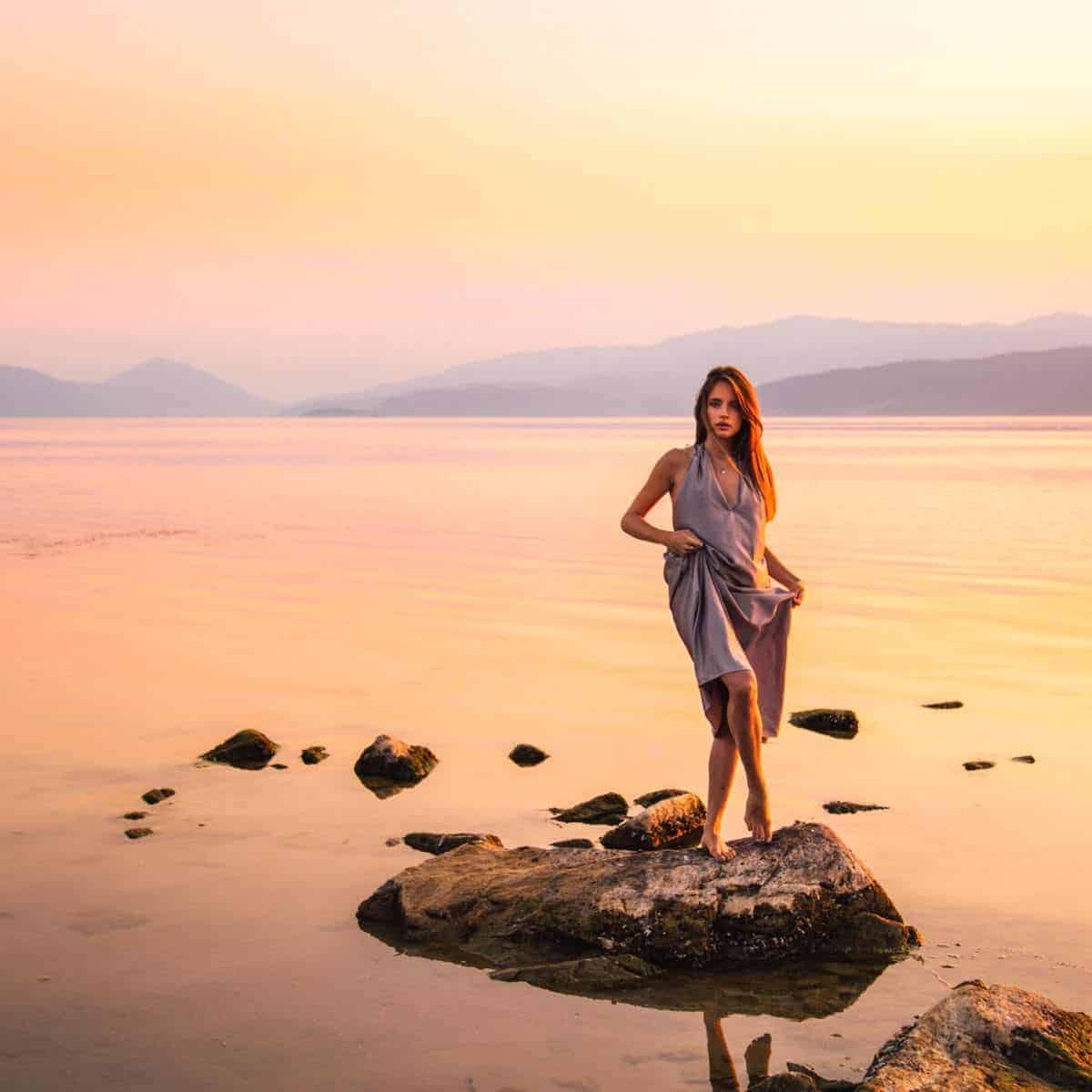Aesthetics has to do with how beautiful something looks and the appreciation of it. Learn aesthetic photography tips for better photos.

Understanding aesthetics
Have you looked at an image and felt in awe while being unsure of the reason? It’s because it was an aesthetic photo.
Related: How to learn photography on your own
In photography, aesthetics is the measurement and appreciation of beauty and tastefulness.
It’s an important aspect that you must understand because photography is a visual art.
To make a photo more aesthetic, you must focus on different elements, such as composition. It’s about how the image looks as a whole.
Related: 10 beginner composition tips
It can get complicated because what you find aesthetic might not resonate with others.
At the end of the day, it’s about what you think is aesthetic, which can also change over time.
By learning about how you can make your photos aesthetic, you’ll be able to take better-looking photos.
This also helps with taking astonishing photos for clients, building a good reputation for your photography style, and becoming more confident in your work.
Related: Understanding color in photography
How to take aesthetic photos
Capturing aesthetically-pleasing photos requires knowledge, intentionality, and great execution.
From the placement of subjects to the direction of light, you must think about the entire image. It comes down to composition, lighting, and the colors in the photo.
Composition
The composition of a photo is the way that elements are arranged. There are many techniques that you can use to make your image more or less interesting.
The following are the best composition techniques:
- Leading lines.
- The rule of thirds.
- Symmetry and asymmetry.
- Framing.
- The rule of odds.
- Creating triangles within the image.
- Fill the frame.
- Negative space.
- Keep your subject’s head above or below the horizon.
Related: How to use leading lines for better photos
It’s important to note that some compositional tools are subtle. You might not notice them unless you look closely. However, they make a difference in the way a viewer perceives the photo.
Intentionally arrange elements and use composition techniques to create an aesthetic photograph.
Lighting
Whether you’re using natural or artificial light, an aesthetic photo requires excellent lighting. It’s about more than the brightness of an image.
It’s about the direction, the tones, mood, and harshness of it. Learning how to control the lighting in a photo will help you achieve an aesthetic image.
Related: Landscape vs. portrait orientation in photography
First, you must understand the difference between harsh and soft light.
Hard light comes from a small and direct light source. You can tell that a photo is taken with hard light because the shadows that it cast have sharp edges.
You’ll encounter hard light on a sunny day around noon. There’ll be a lot of contrast, and you’ll notice dark shadows.
Soft light comes from a large light source, and it creates shadows with soft edges. The transition between lightness and darkness is smooth and gradual.
When you’re shooting portraits, soft light is a great type of lighting to use because it makes it feel friendly, welcoming, and more flattering.
The direction of light is also important because it controls the shadows, shapes, textures, and mood of your photo.
When the light source is in front of your subject, there won’t be shadows on their face. It creates an even light.
If the light source is coming from the side, it’ll cast a shadow across the other half of your subject’s body.
An image that’s lit from the side is considered more dramatic because of the shadows that it creates.
Colors
Colors are essential in photography because of color theory. Basic color theory is about how people perceive colors.
Colors can evoke specific emotions, and some colors look pleasing to the eye when they’re together while others don’t.
Unless you’re shooting black-and-white portraits, understanding what colors work together is essential for your photography.
The colors in your photos will help you tell a story because it causes a viewer to feel certain emotions. It’s a powerful way to communicate.
Red, orange and yellow are considered warm colors. The emotions that it can evoke are warmth, happiness, excitement, and even anger.
There are also cool colors, such as blue, green, and purple. Cool colors evoke feelings of calmness, relaxation, and sadness.
From the trees in the background to the color of the clothes that your subject’s wearing, colors are all around you. Be mindful of the colors to create an aesthetic image.
Finding your aesthetics
There are many concepts and theories about what people find aesthetically pleasing. By using them, your photos will be appealing, and people will be drawn to them.
It’s important to find and understand your aesthetics. You can do this by looking at a set of photos that you’re drawn to. What do they all have in common?
Aside from what you’re drawn to, look at the photos that you’ve taken. Is there a pattern?
By figuring out your photography style and aesthetics, you can take photos that look incredible while having your signature touch to them.
Conclusion
Understand the concepts and theories around aesthetic photography. It’ll help you capture better images that people love and are drawn to. You’ll also be able to develop and fine-tune your personal style.
Featured image courtesy of Unsplash.
